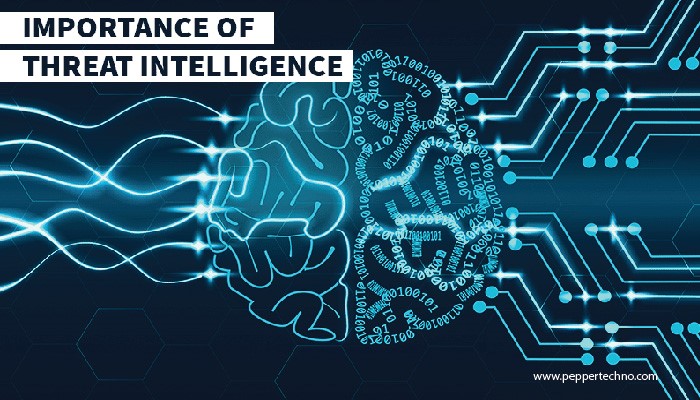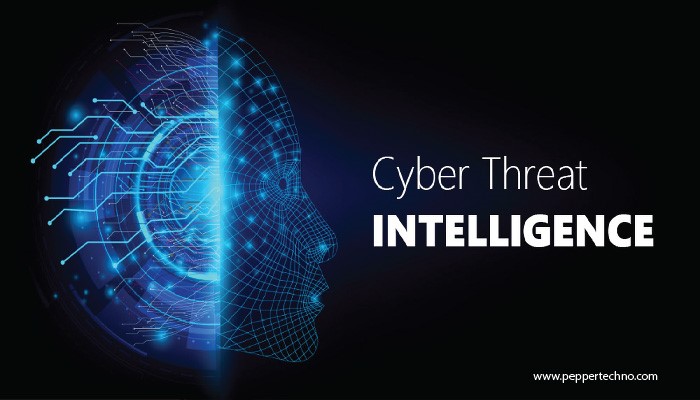Guardians of the Digital Realm: Navigating Cyber security Threat Intelligence in a Dynamic Landscape
Welcome to the digital battlefield, where invisible threats lurk in the shadows of cyberspace. In this ever-evolving landscape, cyber security threat intelligence emerges as the beacon of hope for organizations seeking to safeguard their digital assets. Join us on a journey through the realm of cyber threats and proactive defense strategies as we delve into the world of Cyber security Threat Intelligence.

Common Cyber security Threats and Their Impact
In the digital realm, cyber threats lurk around every corner, ready to exploit vulnerabilities and wreak havoc on individuals and organizations alike. Common cyber security threats come in various forms, from malware and phishing attacks to ransom ware and DDoS assaults. These threats can lead to data breaches, financial losses, reputational damage, and even legal consequences.
Malware poses a significant risk by infecting systems and stealing sensitive information or disrupting operations. Phishing scams trick users into revealing personal data through deceptive emails or messages. Ransom ware locks down files until a ransom is paid, causing disruptions that can be costly to resolve. Distributed Denial of Service (DDoS) attacks overwhelm networks with traffic, leading to downtime and loss of business opportunities.
Understanding these common cyber security threats is crucial for implementing effective defense mechanisms against them. Organizations must stay vigilant and continuously update their security measures to safeguard against evolving cyber risks.
The Importance of Proactive Cyber security Measures
In the ever-evolving digital landscape, the importance of proactive cyber security measures cannot be overstated. By taking a preemptive approach to safeguarding sensitive data and systems, organizations can significantly reduce their vulnerability to cyber threats.
Implementing robust security protocols and regularly updating defenses are crucial steps in staying ahead of malicious actors seeking to exploit weaknesses in networks. It is essential for businesses to prioritize cyber security awareness training among employees, as human error remains one of the most common entry points for cyber-attacks.
Investing in cutting-edge technology solutions such as intrusion detection systems and firewalls can provide an added layer of protection against sophisticated cyber threats. Moreover, conducting regular security audits and risk assessments helps identify potential vulnerabilities before they can be exploited by attackers.
By adopting a proactive stance towards cyber security, organizations demonstrate a commitment to protecting their assets and maintaining trust with customers. In today’s interconnected world, staying vigilant is key to mitigating risks posed by cyber adversaries.
Utilizing Cyber security Threat Intelligence for Mitigation and Prevention
In the ever-evolving landscape of cyber security threats, organizations must leverage threat intelligence to stay ahead of malicious actors. By utilizing cyber security threat intelligence, businesses can proactively identify potential risks and vulnerabilities before they are exploited.
This valuable insight allows security teams to take decisive action in mitigating threats and preventing potential breaches. Whether it’s through monitoring suspicious activities, analyzing patterns in cyber-attacks, or implementing robust security measures, threat intelligence plays a crucial role in fortifying defenses against emerging threats.
Furthermore, by harnessing the power of threat intelligence feeds and platforms, organizations can enhance their incident response capabilities and minimize the impact of cyber incidents. This proactive approach not only strengthens overall security posture but also helps in safeguarding sensitive data from falling into the wrong hands.
Integrating cyber security threat intelligence into an organization’s security strategy is essential for staying one step ahead of cybercriminals and ensuring robust protection against evolving threats.
Challenges in Obtaining Accurate and Timely Threat Intelligence
As guardians of the digital realm, cyber security professionals face significant challenges in obtaining accurate and timely threat intelligence. One major obstacle is the sheer volume of data available, making it difficult to sift through and identify relevant threats. Additionally, the evolving nature of cyber threats means that information can quickly become outdated.
Another challenge lies in the complexity of threat actors’ tactics, techniques, and procedures. Cyber adversaries are constantly refining their methods to evade detection, requiring cyber security teams to stay one step ahead at all times. Moreover, the lack of standardized formats for sharing threat intelligence hinders collaboration among organizations.
Furthermore, there is a shortage of skilled professionals with expertise in analyzing and interpreting threat intelligence effectively. This scarcity underscores the need for ongoing training and education within the cyber security field to address this gap. Navigating these challenges requires a proactive approach and a commitment to continuous improvement in cyber security practices.
Emerging Technologies in Cyber security Threat Intelligence
In the ever-evolving landscape of cyber security, emerging technologies play a crucial role in enhancing threat intelligence capabilities. Artificial Intelligence (AI) and Machine Learning are revolutionizing how organizations detect and respond to cyber threats swiftly and accurately.
By leveraging AI algorithms, security teams can analyze vast amounts of data in real-time, identifying patterns and anomalies that might go unnoticed by traditional methods. Additionally, automation tools streamline threat detection processes, allowing for proactive defense against sophisticated attacks.
Block chain technology is also making waves in cyber security by providing secure data storage and transaction tracking mechanisms. Its decentralized nature enhances data integrity and resilience against tampering or unauthorized access.
Furthermore, Quantum Computing has the potential to exponentially increase computing power, enabling faster encryption-breaking capabilities for both defenders and attackers alike. As cyber threats become more complex, staying abreast of these cutting-edge technologies is essential for maintaining a robust defense posture.
Best Practices for Implementing and Maintaining a Strong Cyber security Posture
When it comes to cyber security threat intelligence, implementing and maintaining a strong posture is crucial in safeguarding your digital assets. One of the best practices is conducting regular security assessments to identify vulnerabilities within your network. This proactive approach allows you to patch any weaknesses before they can be exploited by cyber threats.
Educating staff on cyber security best practices empowers them to recognize potential threats and respond appropriately. Furthermore, utilizing multi-factor authentication for accessing sensitive information adds an extra layer of protection against unauthorized access.
Regularly updating software and firmware across all devices and systems helps prevent known vulnerabilities from being exploited by malicious actors. Implementing robust data encryption protocols ensures that even if data is compromised, it remains unreadable without the decryption key.
By following these best practices and staying vigilant in monitoring your cyber security posture, you can effectively mitigate risks and protect your organization from cyber threats.
Conclusion: Importance of Staying Vigilant in the Ever-Changing
Staying vigilant in the ever-changing landscape of cyber security threat intelligence is paramount for organizations to protect themselves from evolving cyber threats. By implementing proactive measures, utilizing threat intelligence for mitigation and prevention, and staying abreast of emerging technologies, businesses can strengthen their cyber security posture.
Remember, cyber security is not a one-time fix but an ongoing process that requires constant monitoring, adaptation, and improvement. By staying informed, proactive, and prepared, organizations can effectively safeguard their digital assets against potential threats.
Guardians of the digital realm must remain diligent in their efforts to navigate the complex world of cyber security threat intelligence. Only by remaining vigilant can we truly protect ourselves in this dynamic and ever-evolving landscape.



